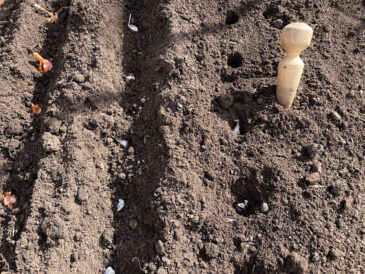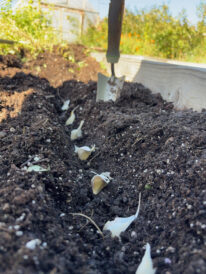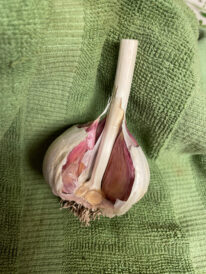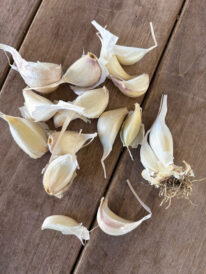Garden Help Desk: Now is a great time to start growing your own garlic
- Furrow planting and dibble planting are two common ways to plant garlic. Both are easy and work well.
- Garlic cloves should be unpeeled and planted pointed side up. Allow 3 to 4 inches between cloves so the garlic has room to grow and less competition for resources.
- The scape on hardneck garlic hardens into a strong, stiff stalk. Four to six large cloves surround the hard center stalk.
- Softneck garlic if the most common garlic found in grocery stores. The heads product many cloves in various sizes.
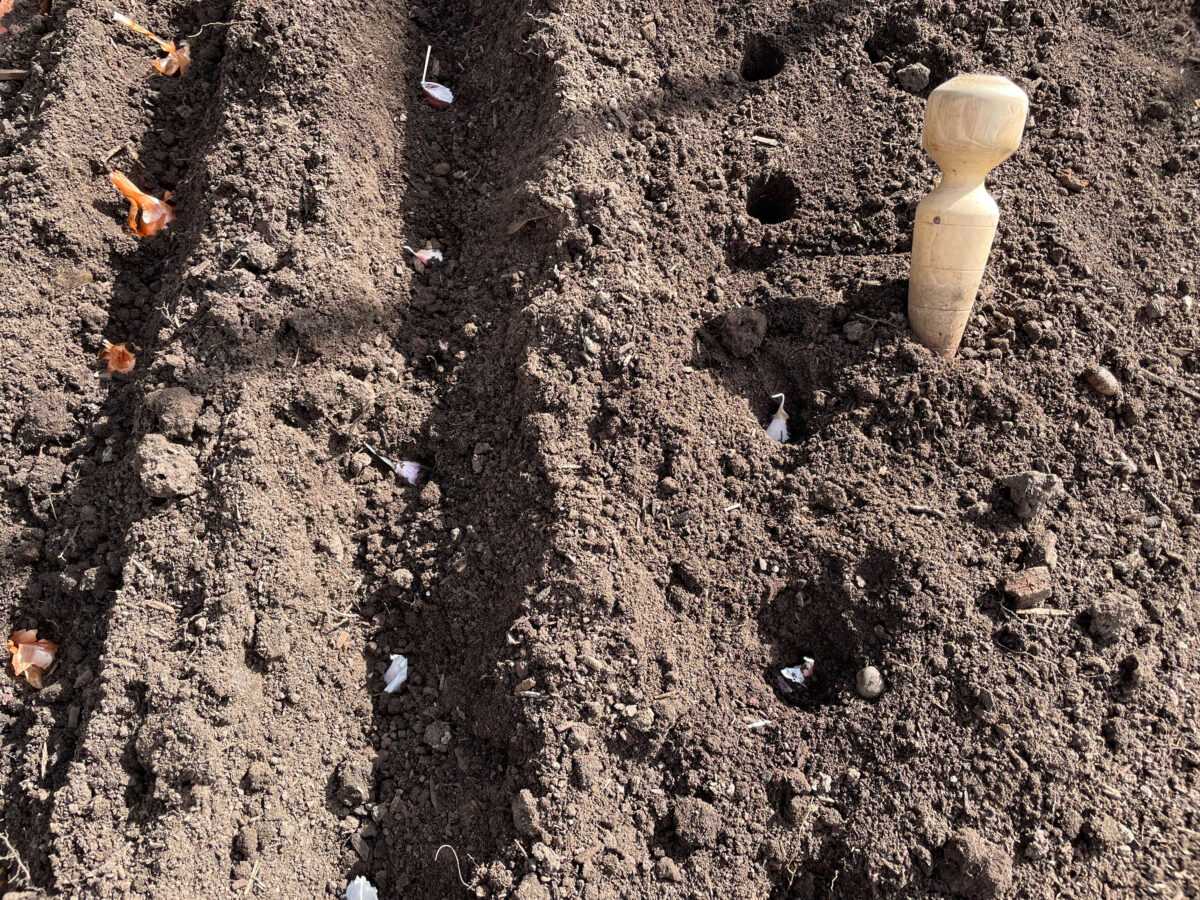
Photo by Meredith Seaver
Furrow planting and dibble planting are two common ways to plant garlic. Both are easy and work well.
Have you ever wanted to try your hand at growing and harvesting your own garlic? October is a great month to get started. And by saving some bulbs from your first harvest to replant the following autumn, you can have a self-sustaining supply of garlic that will keep you stocked for years to come.
It is important to buy whole garlic bulbs from a reputable garden center or online seed company. Grocery store garlic has likely been treated with a sprouting inhibitor. Consider experimenting with several garlic cultivars with different storage capabilities and flavor profiles.
Keep in mind that there are two main types of garlic (Allium sativum): softneck and hardneck. Softneck garlic is generally mild and is often used for braiding garlic ropes. It has excellent storage life, often for well over a year.
Hardneck garlic does not store as long but has a delicious edible stem called a scape. Scapes emerge in early summer from the foliage in a curled fashion before lengthening out. They should be harvested and eaten before they mature and become tough. Removing the scapes provides a tasty addition to savory dishes and leaves more energy to produce larger bulbs. If you let the scape mature, you will find that it forms a bud that will then form tiny flowers. These flowers turn into bulbils which could then be planted to make more bulbs. Unfortunately, this process can take several years. It is more productive to just replant the cloves from the bulbs you harvest.
Hardneck garlic bulbs generally have a stronger flavor and fewer, but larger, cloves than softneck garlic. It is important to note that hardneck varieties usually need an extended period of cold temperatures to initiate bulb formation. This does not usually pose a problem in Northern Utah, however, when planted in the fall and allowed to overwinter in the garden.
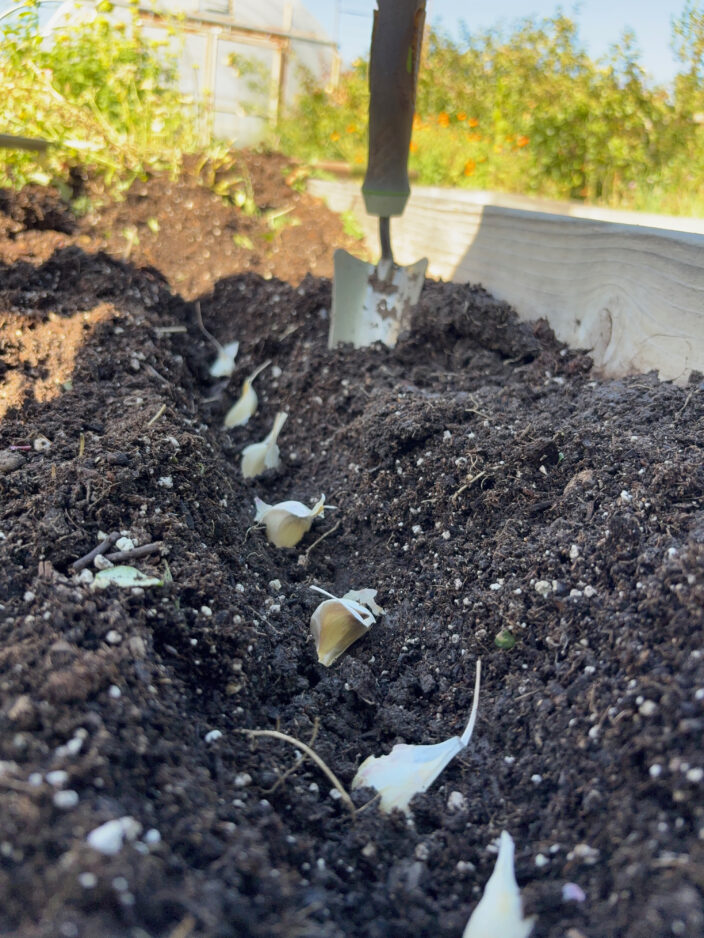
Photo by Elizabeth Binks
Garlic cloves should be unpeeled and planted pointed side up. Allow 3 to 4 inches between cloves so the garlic has room to grow and less competition for resources.
Elephant garlic (Allium ampeloprasum), a lesser-known third type, is more closely related to leeks. It does not store well but is mild in taste. As its name suggests, the bulbs and individual cloves are very large in size.
As you source seed garlic, you may find it interesting to read about the origin of different cultivars. Some cultivars were brought to the United States by families immigrating from their country of origin. They have been kept in the family for many years before being marketed to the public. One such variety is Lorz, a softneck garlic brought to Washington State from Italy by the Lorz family. It was well-adapted to its new environment and is now widely available. Other tried-and-true varieties of softneck garlic include Early Italian, Late Italian and Inchelium Red. Some reputable hardneck garlic options are Music, German Red, Persian Star and Georgia Fire.
When you are ready to plant, gently separate the cloves from each other. Only plant the largest unpeeled cloves and save the smaller cloves for the kitchen. Amend the soil with compost and a balanced fertilizer. Plant each clove, pointed end up, 2 to 3 inches deep and 3 to 4 inches apart in a weed-free bed. Mulch the area to discourage weed germination. After watering them once or twice in the fall, you can forget about them until spring. The roots will establish over the winter and you may see minimal top growth.
In April, side dress the garlic rows with a half pound of 21-0-0 nitrogen per 100 square feet. Repeat again in May with a quarter pound per 100 feet. Keep the soil covered with mulch such as grass clippings, leaves or compost in order to keep weeds in check and conserve moisture. Garlic needs consistently moist (but not soggy) soil. Keep the soil moist to a depth of 12 inches, using a drip line if possible. Top growth is rapid in the spring, and the more top growth you have, the bigger the bulb and cloves will grow.
Harvest in mid-summer when the tops start to turn yellow and tip over. Gently loosen the soil with a spade or garden fork and lift the bulbs. Place the whole plants in a shaded outdoor area to cure. After a couple weeks, the roots and papery outside layers should be dry. Brush off any loose soil. At this point, you could braid softneck cultivars into a rope, or you can cut off dried leaves or scapes to a couple of inches above the bulb. Store them in meshed bags or in open cardboard boxes in a cool, dry place and avoid letting them freeze. Save the biggest bulbs for planting that fall.
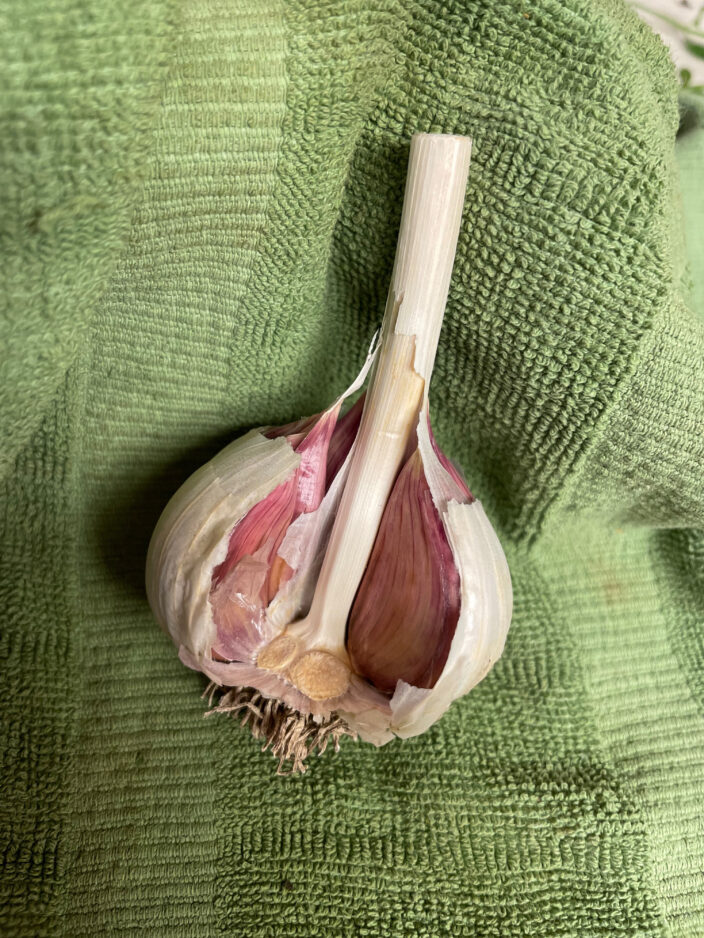
Photo by Meredith Seaver
The scape on hardneck garlic hardens into a strong, stiff stalk. Four to six large cloves surround the hard center stalk.
The process can repeat year after year for as long as you have healthy plants. You’ll soon have lots of garlic to share with family and neighbors.
Elizabeth Binks is a horticulture assistant with Utah State University Extension.
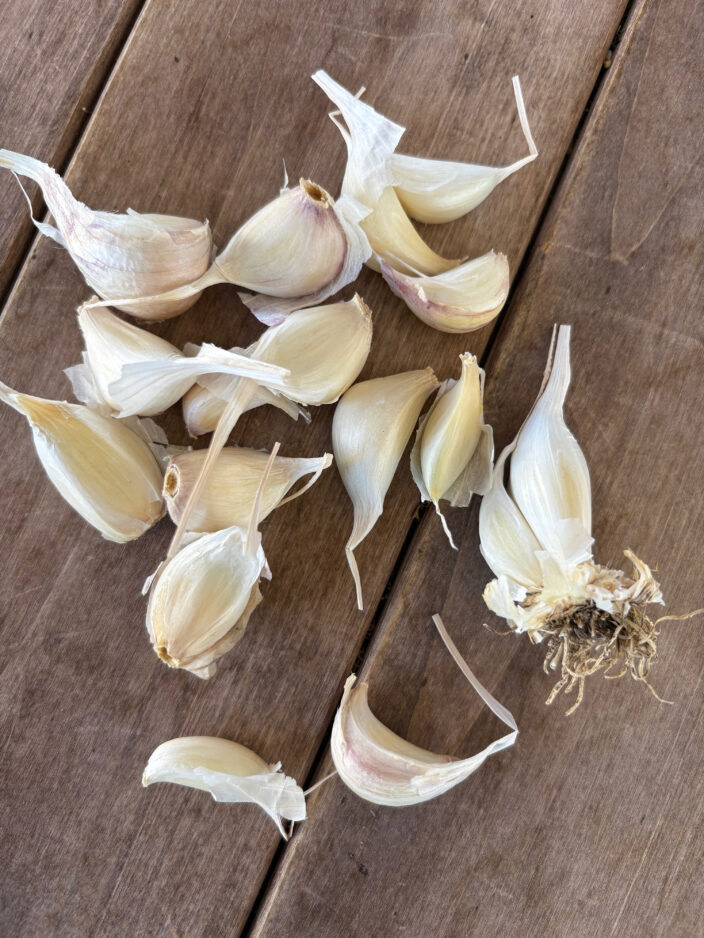
Softneck garlic if the most common garlic found in grocery stores. The heads product many cloves in various sizes.

